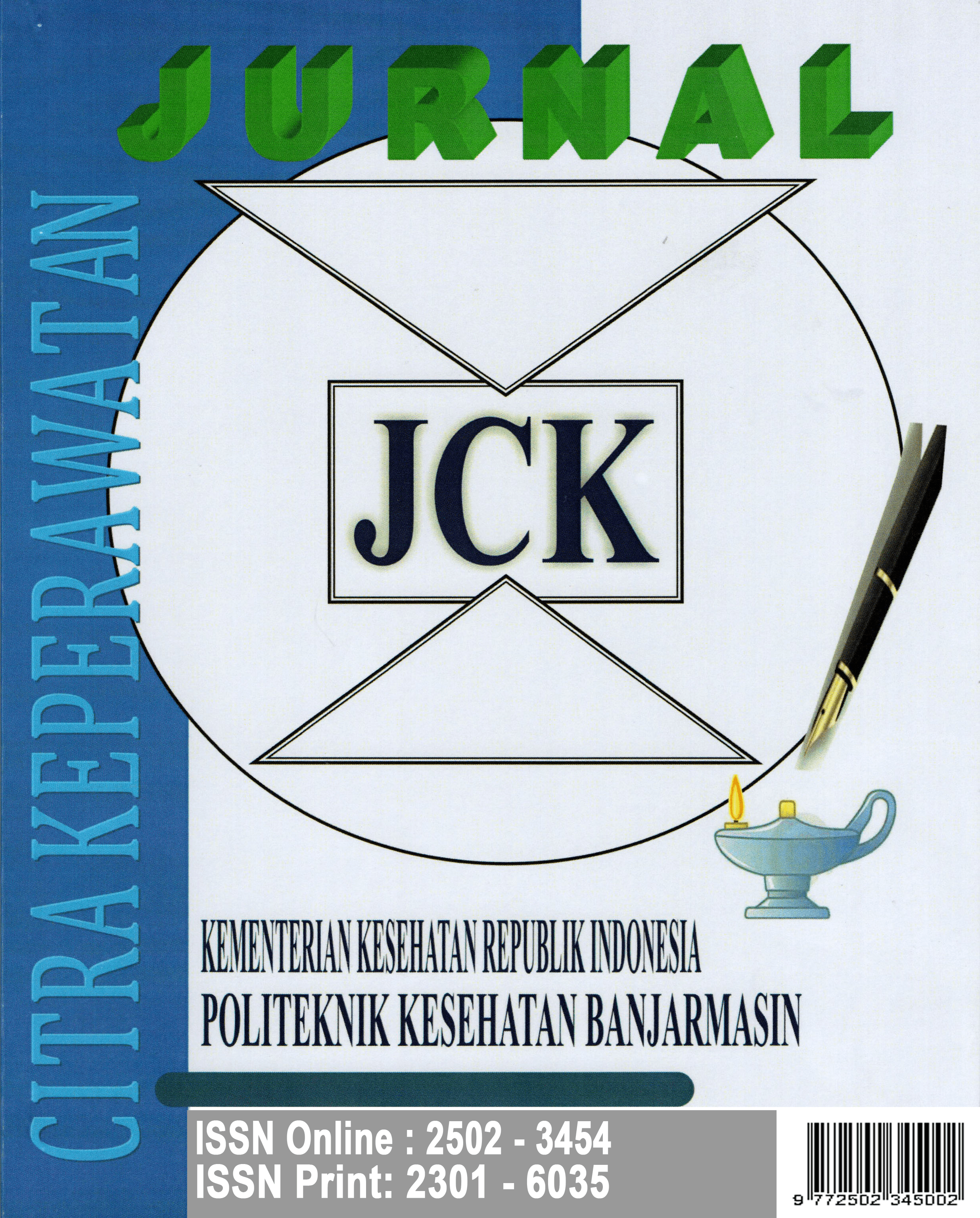Factors, Impacts, and Prevention Strategies of Violence Against Nurses: A Qualitative Study
Abstract
Violence against nurses remains a significant challenge affecting their physical safety, psychological well-being, and professional performance. This study explored the factors contributing to violent behavior against nurses, their diverse impacts, and effective prevention strategies. A qualitative design was used to collect data from thirteen participants through interviews and to analyze them thematically. The study findings revealed that internal factors such as high workload, ineffective communication, and staff attitudes, alongside external factors including patient and family expectations, emotional states, and socio-cultural influences, contributed to violent incidents. The impacts identified included physical injury, psychological trauma, decreased motivation, and compromised quality of care. Participants highlighted prevention strategies involving positive nurse attitudes, patient and family education, effective communication, precise reporting mechanisms, institutional support, psychosocial support, and use of digital technology. The study concluded that addressing violent behavior against nurses requires a comprehensive and multidimensional approach that integrates personal, organizational, and technological interventions. It is recommended that nursing practice prioritize therapeutic communication and empathy, supported by strong policies and psychosocial resources to improve nurse safety and quality of care.
References
Aguglia, A., Murri, M. B., Conigliaro, C., Cipriani, N., Vaggi, M., Di Salvo, G., Maina, G., Cavone, V., Aguglia, E., Serafini, G., & Amore, M. (2020). Workplace violence and burnout among mental health workers. Psychiatric Services, 71(3), 284–288. https://doi.org/10.1176/appi.ps.201900161
Al-Qadi, M. M. (2021). Workplace violence in nursing: A concept analysis. Journal of Occupational Health, 63(1), 1–11. https://doi.org/10.1002/1348-9585.12226
Babiarczyk, B., Turbiarz, A., Tomagová, M., Zeleníková, R., Önler, E., & Cantus, D. S. (2020). Reporting of workplace violence towards nurses in 5 european countries – a cross-sectional study. International Journal of Occupational Medicine and Environmental Health, 33(3), 325–338. https://doi.org/10.13075/IJOMEH.1896.01475
Bernardes, M. L. G., Karino, M. E., Martins, J. T., Okubo, C. V. C., Galdino, M. J. Q., & Moreira, A. A. O. (2021). Workplace violence among nursing professionals. Revista Brasileira de Medicina Do Trabalho, 18(3), 250.
Bingöl, S., & İnce, S. (2021). Factors influencing violence at emergency departments: Patients’ relatives’ perspectives. International Emergency Nursing, 54, 100942. https://doi.org/https://doi.org/10.1016/j.ienj.2020.100942
Bordignon, M., & Monteiro, M. I. (2021). Analysis of workplace violence against nursing professionals and possibilities for prevention. Revista Gaúcha de Enfermagem, 42, e20190406. https://doi.org/https://doi.org/10.1590/1983-1447.2021.20190406
Cao, Y., Gao, L., Fan, L., Zhang, Z., Liu, X., Jiao, M., Li, Y., & Zhang, S. (2023). Effects of verbal violence on job satisfaction, work engagement and the mediating role of emotional exhaustion among healthcare workers: A cross-sectional survey conducted in Chinese tertiary public hospitals. BMJ Open, 13(3), 1–12. https://doi.org/10.1136/bmjopen-2022-065918
Caruso, R., Toffanin, T., Folesani, F., Biancosino, B., Romagnolo, F., Riba, M. B., McFarland, D., Palagini, L., Belvederi Murri, M., Zerbinati, L., & Grassi, L. (2022). Violence Against Physicians in the Workplace: Trends, Causes, Consequences, and Strategies for Intervention. Current Psychiatry Reports, 24(12), 911–924. https://doi.org/10.1007/s11920-022-01398-1
Cranage, K., & Foster, K. (2022). Mental health nurses’ experience of challenging workplace situations: A qualitative descriptive study. International Journal of Mental Health Nursing, 31(3), 665–676. https://doi.org/10.1111/inm.12986
Dafny, H. A., & Beccaria, G. (2020). I do not even tell my partner: Nurses’ perceptions of verbal and physical violence against nurses working in a regional hospital. Journal of Clinical Nursing, 29(17–18), 3336–3348. https://doi.org/10.1111/jocn.15362
Damopoli, R. ., Manampiring, A. E., & Doda, D. . (2019). Hubungan Kekerasan Dengan Stres Kerja Pada Perawat Unit Gawat Darurat Dan Intensive Care Unit Rumah Sakit Di Kota Bitung Dan Kabupaten Minahasa Utara. Jurnal KESMAS, 8(3), 50–59. https://ejournal.unsrat.ac.id/index.php/kesmas/article/view/23942
Dees, M. L., Carpenter, J. S., & Longtin, K. (2022). Communication between registered nurses and family members of intensive care unit patients. Critical Care Nurse, 42(6), 25–34. https://doi.org/https://doi.org/10.4037/ccn2022913
Di Prinzio, R. R., Bondanini, G., De Falco, F., Vinci, M. R., Camisa, V., Santoro, A., De Santis, M., Raponi, M., Dalmasso, G., & Zaffina, S. (2023). The Management of Workplace Violence against Healthcare Workers: A Multidisciplinary Team for Total Worker Health® Approach in a Hospital. International Journal of Environmental Research and Public Health, 20(1). https://doi.org/10.3390/ijerph20010196
Du, Y., Wang, W., Washburn, D. J., Lee, S., Towne, S. D., Zhang, H., & Maddock, J. E. (2020). Violence against healthcare workers and other serious responses to medical disputes in China: Surveys of patients at 12 public hospitals. BMC Health Services Research, 20(1), 1–10. https://doi.org/10.1186/s12913-020-05104-w
Eshah, N., Al Jabri, O. J., Aljboor, M. A., Abdalrahim, A., ALBashtawy, M., Alkhawaldeh, A., Saifan, A., Ayed, A., & Rayan, A. (2024). Workplace Violence Against Healthcare Workers: A Literature Review. SAGE Open Nursing, 10. https://doi.org/10.1177/23779608241258029
Fabri, N. V., Martins, J. T., Galdino, M. J. Q., Ribeiro, R. P., & Moreira, A. A. O. (2022). Workplace violence and professional quality of life among primary care nurses. ACTA Paulista de Enfermagem, 35, 1–8. https://doi.org/10.37689/acta-ape/2022AO03623459
Ferracuti, S., Barchielli, B., Napoli, C., Giannini, A. M., & Parmigiani, G. (2022). Managing and preventing acts of violence against health workers: results of a review evaluating hospital control procedures. Journal of Aggression, Conflict and Peace Research, 14(2), 100–111. https://doi.org/10.1108/JACPR-07-2021-0615
Foli, K. J. (2022). A Middle-Range Theory of Nurses’ Psychological Trauma. Advances in Nursing Science, 45(1). https://doi.org/10.1097/ANS.0000000000000388
Havaei, F., & MacPhee, M. (2020). The impact of heavy nurse workload and patient/family complaints on workplace violence: An application of human factors framework. Nursing Open, 7(3), 731–741. https://doi.org/10.1002/nop2.444
Heryyanoor et al. (2024). Analisis Faktor Penyebab Perilaku Kekerasan Terhadap Perawat di Fasilitas Layanan Kesehatan. Sekolah Tinggi Ilmu Kesehatan Intan Martapura.
Jang, S. J., Son, Y., & Lee, H. (2022). Prevalence, associated factors and adverse outcomes of workplace violence towards nurses in psychiatric settings: A systematic review. International Journal of Mental Health Nursing, 31(3), 450–468. https://doi.org/https://doi.org/10.1111/inm.12951
Jennings, B. M., Baernholdt, M., & Hopkinson, S. G. (2022). Exploring the turbulent nature of nurses’ workflow. Nursing Outlook, 70(3), 440–450. https://doi.org/https://doi.org/10.1016/j.outlook.2022.01.002
Kang, Y., & Bang, C. (2024). Workload-related issues among nurses caring for patients with behavioral and psychological symptoms of dementia: a scoping review. Healthcare, 12(18), 1893. https://doi.org/https://doi.org/10.3390/healthcare12181893
Karatuna, I., Jönsson, S., & Muhonen, T. (2020). Workplace bullying in the nursing profession: A cross-cultural scoping review. International Journal of Nursing Studies, 111, 103628. https://doi.org/https://doi.org/10.1016/j.ijnurstu.2020.103628
Kholis, A. H., Hidayah, N., Priyanti, R. P., & ... (2019). Trauma Psikologis Perawat Instalasi Gawat Darurat dalam Menghadapi Kekerasan Verbal di Tempat Kerja: Penelitian Kualitatif. Jurnal Keperawatan BSI, 7(2), 78–87. http://ejurnal.ars.ac.id/index.php/keperawatan%0Ahttp://ejurnal.ars.ac.id/index.php/keperawatan/article/view/121
Kim, S., Lynn, M. R., Baernholdt, M., Kitzmiller, R., & Jones, C. B. (2023). How Does Workplace Violence–Reporting Culture Affect Workplace Violence, Nurse Burnout, and Patient Safety? Journal of Nursing Care Quality, 38(1). https://journals.lww.com/jncqjournal/fulltext/2023/01000/how_does_workplace_violence_reporting_culture.5.aspx
Kompas.com. (2021). Kekerasan Perawat di Palembang, ini Sikap Persatuan Perawat Nasional Indonesia. https://www.kompas.com/sains/read/2021/04/17/150200923/kekerasan-perawat-di-palembang-ini-sikap-persatuan-perawat-nasional?page=all
Kompas TV. (2023). Perawat RSUD Kendari Dipukul Keluarga Pasien Hingga Alami Gangguan Pendengaran. https://www.youtube.com/watch?v=zO1g5uyatvI
Krut, B. A., Laing, C. M., Moules, N. J., & Estefan, A. (2021). The impact of horizontal violence on the individual nurse: A qualitative research study. Nurse Education in Practice, 54, 103079. https://doi.org/https://doi.org/10.1016/j.nepr.2021.103079
Laksono, S. (2024). Kekerasan oleh Pasien terhadap Tenaga Kesehatan : Suatu Perspektif. Jamarsi: Jurnal Ahli Manajemen Dan Administrasi Rumah Sakit, 1(3), 15–17.
Leźnicka, M. M., & Zielińska-Więczkowska, H. (2024). Violence in the workplace. The occurrence of the phenomenon in relation to health care workers. Psychiatria Polska, 58(2). https://doi.org/10.12740/PP/OnlineFirst/152775
Li, Y. L., Li, R. Q., Qiu, D., & Xiao, S. Y. (2020). Prevalence of workplace physical violence against health care professionals by patients and visitors: A systematic review and meta-analysis. International Journal of Environmental Research and Public Health, 17(1). https://doi.org/10.3390/ijerph17010299
Magnavita, N., Mele, L., Meraglia, I., Merella, M., Vacca, M. E., Cerrina, A., Gabriele, M., Labella, M., Soro, M. T., & Ursino, S. (2022). The impact of workplace violence on headache and sleep problems in nurses. International Journal of Environmental Research and Public Health, 19(20), 13423.
Mercan, N., & Mersin, S. (2025). Evaluating the therapeutic communication skills of nursing students in the clinical setting: The experiences of students, patients and patients’ relatives. Heliyon, 11(1). https://doi.org/10.1016/j.heliyon.2025.e41677
Mottaghi, S., Poursheikhali, H., & Shameli, L. (2020). Empathy, compassion fatigue, guilt and secondary traumatic stress in nurses. Nursing Ethics, 27(2), 494–504. https://doi.org/10.1177/0969733019851548
Norouzadeh, R., Anoosheh, M., & Ahmadi, F. (2022). Nurses’ communication with the families of patients at the end-of-life. OMEGA-Journal of Death and Dying, 86(1), 119–134. https://doi.org/https://doi.org/10.1177/0030222820959933
Pagnucci, N., Ottonello, G., Capponi, D., Catania, G., Zanini, M., Aleo, G., Timmins, F., Sasso, L., & Bagnasco, A. (2022). Predictors of events of violence or aggression against nurses in the workplace: A scoping review. Journal of Nursing Management, 30(6), 1724–1749. https://doi.org/10.1111/jonm.13635
Pariona-Cabrera, P., Cavanagh, J., & Bartram, T. (2020). Workplace violence against nurses in health care and the role of human resource management: A systematic review of the literature. Journal of Advanced Nursing, 76(7), 1581–1593. https://doi.org/10.1111/jan.14352
Putikadyanto, A. P. A., & Laila, Y. (2022). Kekerasan Terhadap Perempuan Dalam Berita: Analisis Pemberitaan Tindak Kekerasan Perawat Christina Ramauli Simatupang Di Media Nasional Indonesia. Lingua: Jurnal Bahasa Dan Sastra, 18(2), 157–170. https://doi.org/10.15294/lingua.v18i2.37154
Rasool, S. F., Wang, M., Zhang, Y., & Samma, M. (2020). Sustainable work performance: the roles of workplace violence and occupational stress. International Journal of Environmental Research and Public Health, 17(3). https://doi.org/10.3390/ijerph17030912
Reißmann, S., Wirth, T., Beringer, V., Groneberg, D. A., Nienhaus, A., Harth, V., & Mache, S. (2023). “I think we still do too little”: measures to prevent violence and aggression in German emergency departments – a qualitative study. BMC Health Services Research, 23(1), 1–16. https://doi.org/10.1186/s12913-023-09044-z
Rushton, C. H., Wood, L. J., Grimley, K., Mansfield, J., Jacobs, B., & Wolf, J. A. (2021). Rebuilding a foundation of trust: A call to action in creating a safe environment for everyone. Patient Experience Journal, 8(3), 5–12. https://doi.org/10.35680/2372-0247.1651
Saragih, I. D., Tarihoran, D. E. T. A. U., Rasool, A., Saragih, I. S., Tzeng, H., & Lin, C. (2022). Global prevalence of stigmatization and violence against healthcare workers during the COVID‐19 pandemic: a systematic review and meta‐analysis. Journal of Nursing Scholarship, 54(6), 762–771.
Sim, I. O., Ahn, K. M., & Hwang, E. J. (2020). Experiences of psychiatric nurses who care for patients with physical and psychological violence: a phenomenological study. International Journal of Environmental Research and Public Health, 17(14), 1–12. https://doi.org/10.3390/ijerph17145159
Spencer, C., Sitarz, J., Fouse, J., & DeSanto, K. (2023). Nurses’ rationale for underreporting of patient and visitor perpetrated workplace violence: a systematic review. BMC Nursing, 22(1), 1–11. https://doi.org/10.1186/s12912-023-01226-8
Stafford, S., Avsar, P., Nugent, L., O’Connor, T., Moore, Z., Patton, D., & Watson, C. (2022). What is the impact of patient violence in the emergency department on emergency nurses’ intention to leave? Journal of Nursing Management, 30(6), 1852–1860. https://doi.org/10.1111/jonm.13728
Tuominen, J., Tölli, S., & Häggman-Laitila, A. (2023). Violence by clients and patients against social and healthcare staff – An integrative review of staff’s well-being at work, implementation of work and leaders’ activities. Journal of Clinical Nursing, 32(13–14), 3173–3184. https://doi.org/10.1111/jocn.16425
Üzar-Özçetin, Y. S., Tee, S., & Erkan, M. (2020). A reputational risk for the profession: Workplace violence toward nursing students. Collegian, 27(3), 327–333. https://doi.org/https://doi.org/10.1016/j.colegn.2020.01.001
Vento, S., Cainelli, F., & Vallone, A. (2020). Violence Against Healthcare Workers: A Worldwide Phenomenon With Serious Consequences. Frontiers in Public Health, 8(September), 10–13. https://doi.org/10.3389/fpubh.2020.570459
Volonnino, G., Spadazzi, F., De Paola, L., Arcangeli, M., Pascale, N., Frati, P., & La Russa, R. (2024). Healthcare Workers: Heroes or Victims? Context of the Western World and Proposals to Prevent Violence. Healthcare (Switzerland), 12(7), 1–10. https://doi.org/10.3390/healthcare12070708
Wei, H. (2022). The development of an evidence-informed convergent care theory: working together to achieve optimal health outcomes. International Journal of Nursing Sciences, 9(1), 11–25. https://doi.org/https://doi.org/10.1016/j.ijnss.2021.12.009
Zhang, J., Zheng, J., Cai, Y., Zheng, K., & Liu, X. (2021). Nurses’ experiences and support needs following workplace violence: A qualitative systematic review. Journal of Clinical Nursing, 30(1–2), 28–43. https://doi.org/https://doi.org/10.1111/jocn.15492
Copyright article owned by Jurnal Citra Keperawatan












